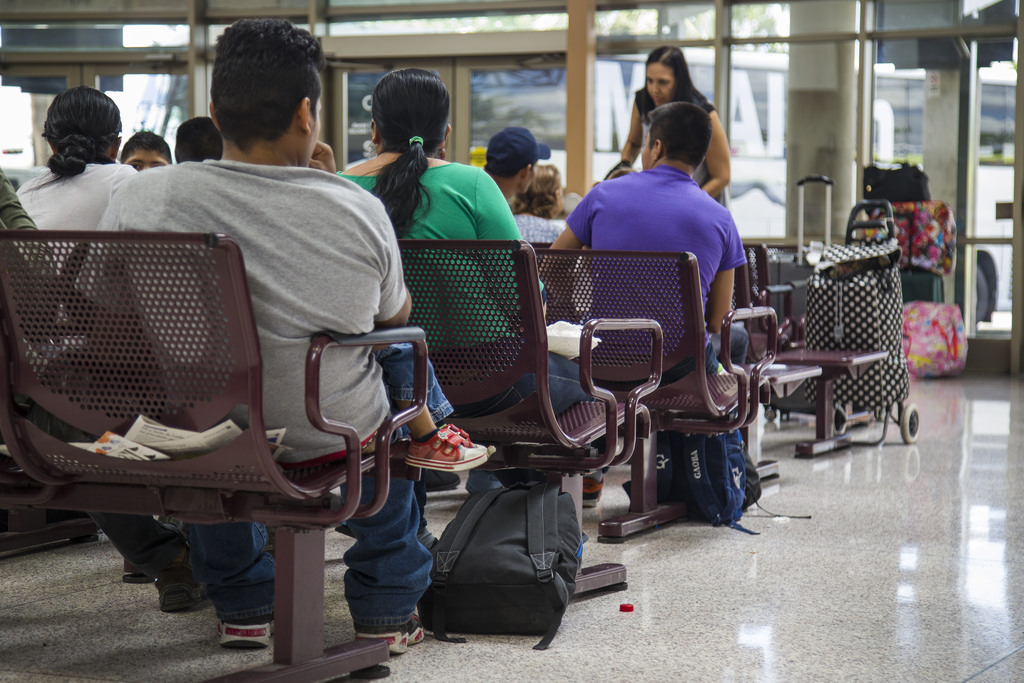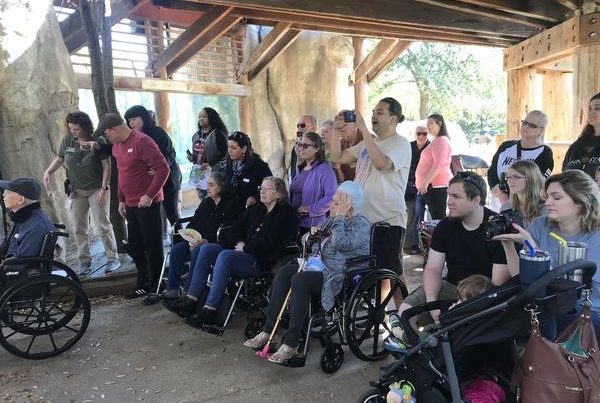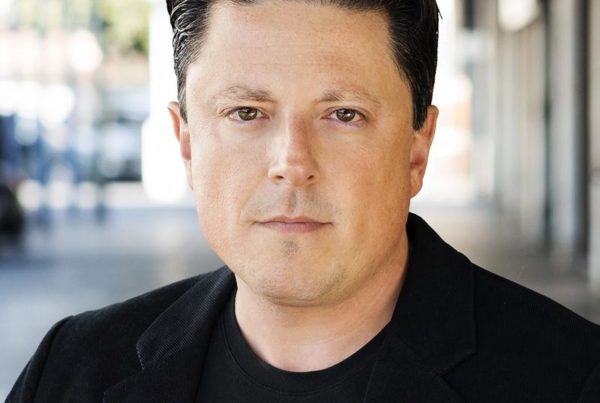From Texas Public Radio:
On Saturday afternoon at the Catholic Charities Community Center on San Antonio’s westside, an infant is struggling to breathe. He’s only a month old and already he’s seen more upheaval than most adults. His family says they were forced to flee their home in Guatemala; the child was born in Mexico while they journeyed to the United States. After being detained by Immigration authorities at the border, the family was released.
Now, in San Antonio, the heavy oak pollen in the air is overwhelming for the baby. His parents look worried and rub his back to help him breathe. With his tiny sinuses blocked, he can’t nurse and breathe at the same time. San Antonio Archbishop Gustavo García-Siller calls for a nurse.
The nurse uses a blue rubber suction bulb to clear the mucus in Antonio’s nose. He calms down. All he needed was a little help. García-Siller says, that’s what his organization is trying to do, too.
“We are blessed to help. We will not stop helping them, and to do that is just and what is right,” García-Siller says
The Archbishop says these asylum-seekers are no threat to United States.
“You can see it’s mainly families – mothers, fathers, babies. It’s a young population and, of course, we were not expecting that many now,” he says.
The spike in numbers of asylum-seekers has raised concerns across the South Texas border region. More than 76,000 immigrants without authorization surrendered or were apprehended by U.S. Customs and Border Protection in February, the highest number in more than a decade.
Also, people are showing up in parts of the border that don’t normally see many asylum-seekers, like in the Del Rio and Eagle Pass areas southwest of San Antonio. It takes more resources to detain families as opposed to individuals, and families seeking asylum mean more work for the U.S. Border Patrol, but the agency isn’t prepared.
So, beginning Thursday, the Border Patrol began releasing many asylum-seekers from detention in South Texas.
“These people are not breaking the law – they are not breaking the law,” García-Siller says.
He says they are not illegal immigrants; they are requesting asylum, which is allowed. They are given documentation by CBP to enter the United States and pursue their claims in immigration court. So calling them undocumented isn’t accurate either.
Approximately 300 of these previously detained asylum-seekers arrived in San Antonio over the weekend – so many that the city opened a pop-up immigration resource center across the street from the Greyhound bus station. In the center, children are playing on the floor while volunteers help parents figure out their next steps.
San Antonio interim Assistant City Manager Colleen Bridger says setting up the resource center was an emergency response.
“We set this up to get us through the weekend because folks are getting real tired. We’ve had a lot of people coming in late Thursday night, late Friday night, and our nonprofit partners were just stretched beyond their abilities,” Bridger says.
But it’s unclear how long the city will need to keep the center open.
“Even when we talk to Border Patrol and ICE [Immigration and Customs Enforcement], they’re not sure how many people are going to continue to come across the border seeking asylum,” Bridger says.
In the past, asylum-seekers whom CBP had release arrived in San Antonio with travel plans and bus tickets – things that were pre-arranged during their time in detention. But many in this wave of asylum-seekers didn’t spend much time in detention, so they’re dropped off with no money, no bus tickets and no idea of how to get to their final destination. CBP released so many asylum-seekers that almost all of the buses leaving San Antonio were sold out, leaving the families stranded through the weekend, or even longer. Some nonprofit groups ended up buying bus tickets and hotel rooms for the stranded families. Antonio Fernandez, CEO of Catholic Charities of San Antonio, says unless his organization will run out of money unless it gets financial support from the city to help with the asylum-seekers.
“I hope they can give it to us because sooner or later I won’t be able to do this anymore,” he says.
There’s no indication that the influx of Central American families seeking asylum at the southern U.S. border is waning. Those in San Antonio working to help those families aren’t sure how long they’ll be able to sustain their warm welcome.
















